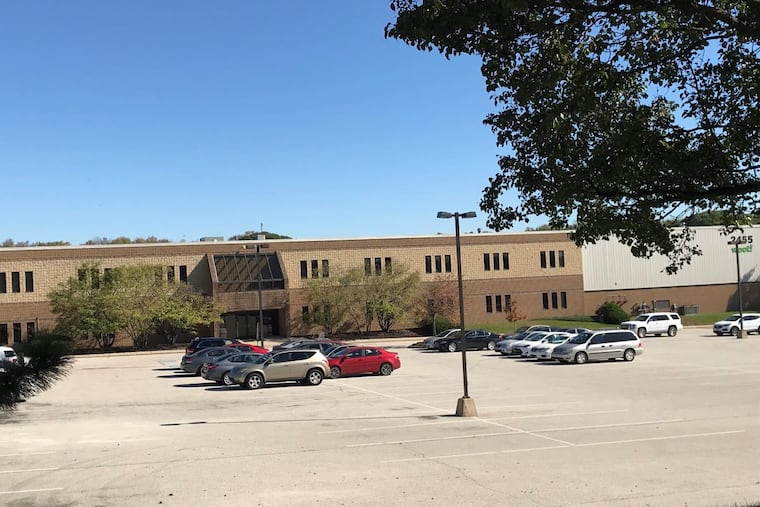Pa. approves Amazon's Woot! clothing plant near Norristown
Amazon can install machines producing up to 25 million pieces of clothing a year - enough to print a colorful shirt and pant set for every Pennsylvanian. The goal is likely for the online giant to dominate another industry.

Amazon's Woot! clothing unit can start installing 48 industrial printers, 16 giant dryers, and pollution-control equipment at a plant outside Norristown, after its plan was approved Wednesday by the state Department of Environmental Protection.
Under terms of the permit, Amazon could install machines that would produce up to 25 million pieces of clothing a year — enough to print a colorful shirt and pant set for every Pennsylvanian — if it ran the 110,000-square-foot plant 24 hours every day. Kornit Digital, the Israel-based manufacturer of the Avalanche 1000 printers that Amazon plans to install, says those machines can run more than triple the permit speed, producing more than 90 million garments a year.
It is the first of what Amazon watchers expect may be a string of garment-printing and eventually design and manufacturing centers to take clothing production in-house. That would make clothing the latest of several businesses (including books and video) in which the company started as an online retailer of others' products, progressed to licensing others' products under its own brand, and then started making some of its own.
Last month, Amazon was awarded a U.S. patent for any automated system that could rapidly produce and ship clothes to customers, enabling Amazon to bypass middlemen and the mostly foreign manufacturers who make most U.S. clothes. The company has also acquired digital-fitting technology that could enable home shoppers to order fitted, custom clothes.
But the plan approved for the plant focuses on the simpler step of printing clothes, potentially competing with and replacing the commercial silk-screeners who customize T-shirts and jackets for teams and events.
When it applied for the Pennsylvania permit last summer, Amazon had hoped to open the plant in a West Norriton Township industrial park building in time to ship millions of garments for this year's Christmas shopping season. The state speeded up its review, which could have lasted into next year, to get it done by mid-November.
But Amazon is now deep into the holiday season and won't likely get the Norristown plant running until next year, Brian Drab, stock analyst for William Blair & Co., wrote in a report to clients. The company has at least one other clothing plant in the works, he added. The Amazon official in charge of the plant didn't return calls to his office at the company's base in Seattle.
According to the permit, Amazon plans to install 48 Kornit Avalanche 1000 printers, worth more than $20 million at prices quoted online by equipment dealers. Kornit says each machine can print up to 220 light-colored (or 160 dark) garments, sleeves, or other cloth pieces an hour. The permit says they will print up to 60 an hour, with no reason given for the slower target pace.
The 16 driers, made by the M&R Companies, based in Roselle, Ill., bake newly printed garments at temperatures of up to 330 degrees Fahrenheit, far hotter than what's needed to boil water.
The permit says Amazon can emit an average of up to 3.6 pounds of volatile organic compounds an hour from the plant (12.9 tons in a 12-month period), plus about 11 ounces of hazardous air pollutants per hour (3 tons a year). The plant's pollution-control equipment includes a natural gas-burning regenerative thermal oxidizer, which cools exhaust from the printers and dryers.
The permit allows Amazon to install the machines and run them for a "shakedown" period of up to six months, between now and May 2019. Once the plant is operating, Amazon will need to file regular Pennsylvania pollution reports and obtain permanent operating approval.
Amazon has advertised for a handful of manufacturing and production positions at the plant. With more than 400,000 employees nationwide, Amazon has large "fulfillment center" warehouses with up to a few thousand employees scattered around the country, including 14 in Pennsylvania (more than any state except California), several in New Jersey, and two in Delaware. The company has lately added many smaller Amazon Prime delivery centers in King of Prussia and other suburbs.